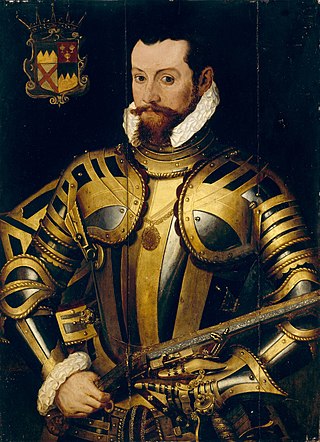
Thomas Butler, 10th Earl of Ormond and 3rd Earl of OssoryPC (Ire), was an influential courtier in London at the court of Elizabeth I. He was Lord Treasurer of Ireland from 1559 to his death. He fought for the crown in the Rough Wooing, the Desmond Rebellions, and Tyrone's Rebellion. He fought his rival, Gerald FitzGerald, 14th Earl of Desmond in the Battle of Affane in 1565.
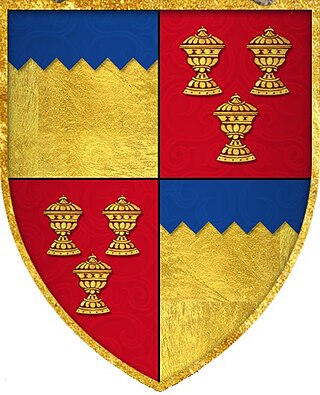
Piers Butler, 8th Earl of Ormond, 1st Earl of Ossory also known as Red Piers, was from the Polestown branch of the Butler family of Ireland. In the succession crisis at the death of Thomas Butler, 7th Earl of Ormond he succeeded to the earldom as heir male, but lost the title in 1528 to Thomas Boleyn. He regained it after Boleyn's death in 1538.
Sir Walter Butler, 11th Earl of Ormond and 4th Earl of Ossory (1559–1633), succeeded his uncle Black Tom, the 10th earl, in 1614. He was called "Walter of the Beads" because he was a devout Catholic, whereas his uncle had been a Protestant. King James I intervened and awarded most of the inheritance to his uncle's Protestant daughter Elizabeth. Ormond contested the King's decision and was for that insolence detained in the Fleet Prison from 1619 until 1625 when he submitted to the King's ruling. He then found a means to reunite the Ormond estate, by marrying his grandson James, who had been raised a Protestant, to Elizabeth's only daughter.
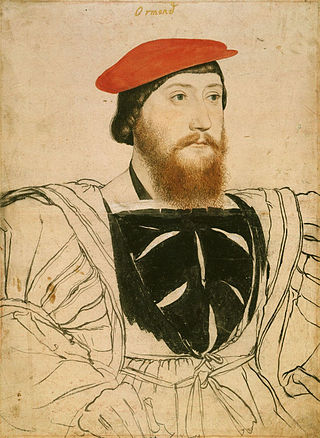
James Butler, 9th Earl of Ormond and 2nd Earl of Ossory, known as the Lame, was in 1541 confirmed as Earl of Ormond thereby ending the dispute over the Ormond earldom between his father, Piers Butler, 8th Earl of Ormond, and Thomas Boleyn, 1st Earl of Wiltshire. Butler died from poison in London.
Richard Butler, 1st Viscount Mountgarret was the son of Piers Butler, 8th Earl of Ormond and Lady Margaret Fitzgerald. He married his half first cousin Eleanor Butler, daughter of Theobald Butler of Polestown, the illegitimate brother of the 8th Earl of Ormond. He was created 1st Viscount Mountgarret in 1550.
John Butler, Earl of Gowran (1643–1677) was an MP in the Irish Parliament 1661–1666 before being created Earl of Gowran in 1676. He married but died childless.

George de la Poer Beresford, 1st Marquess of Waterford, KP, PC (Ire) was an Irish politician, known as George Beresford, 2nd Earl of Tyrone from 1763 to 1789.
Piers Butler, 3rd Viscount Galmoye, otherwise Viscount Galmoy, was an Anglo-Irish nobleman. He was descended from the 10th Earl of Ormond. He was the son of Edward Butler, 2nd Viscount Galmoye and Eleanor White.
Thomas Fleming was an Irish peer, and a member of the Parliament of Ireland of 1585. He was the son of James Fleming, and great-grandson of James Fleming, 7th Baron Slane. His mother was Ismay Dillon, daughter of Sir Bartholomew Dillon, Lord Chief Justice of Ireland and his first wife Elizabeth Barnewall; after his father's death she remarried Sir Thomas Barnewall of Trimlestown.
Sir James Butler of Polestown was a warlord in Yorkist Ireland.

Margaret Butler, Countess of Ormond, Countess of Ossory was an Irish noblewoman and a member of the powerful and celebrated FitzGerald dynasty also known as "The Geraldines". She married Piers Butler, 8th Earl of Ormond, by whom she had three sons and six daughters.
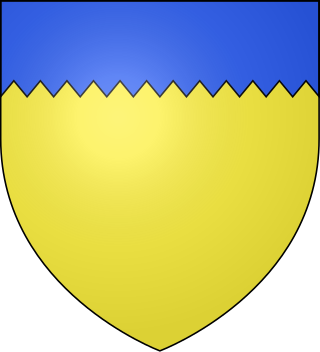
Butler is the name of a noble family whose members were, for several centuries, prominent in the administration of the Lordship of Ireland and the Kingdom of Ireland. They rose to their highest prominence as Dukes of Ormonde. The family has produced multiple titles such as Baron Cahir, Baron Dunboyne, Viscount Ikerrin, Viscount Galmoye, Viscount Mountgarret, Viscount Thurles, Earl of Carrick, Earl of Kilkenny, Earl of Ormond, Earl of Ossory, Marquess of Ormonde and Duke of Ormonde. Variant spellings of the name include le Boteler and le Botiller. The Butlers were descendants of Anglo-Norman lords who participated in the Norman invasion of Ireland in the 12th century. The surname has its origins in the hereditary office of "Butler (cup-bearer) of Ireland", originating with Theobald Walter, 1st Chief Butler of Ireland. The arms of later family members depicted three cups in recognition of their original office.
Edward Butler, 2nd Viscount Galmoye was the son of Piers Butler of Duiske and Margaret Netterville, daughter of Nicholas Netterville, 1st Viscount Netterville. His grandfather was Edward Butler, 1st Viscount Galmoye.
Richard Butler of Kilcash (1615–1701) was an Irish soldier and landowner, the third son of Thomas Butler, Viscount Thurles and brother of James, 1st Duke of Ormonde. He sided with the Irish Confederacy at the Irish Rebellion of 1641. He scouted the enemy on the morning of the Battle of Cloughleagh. His descendants succeeded to the earldom of Ormond when the senior branch of the family failed in 1758.
Piers FitzThomas Butler of Duiske, was the illegitimate son of Thomas Butler, 10th Earl of Ormond. The lands of Duiske Abbey had reverted to his father. In 1597, the earl executed a deed of conveyance in his favour for the lands.
Edmond Butler of Killoshulan, Duiske, County Kilkenny was the youngest son of Piers Butler of Duiske and Margaret Netterville, daughter of Nicholas Netterville, 1st Viscount Netterville. His grandfather was Edward Butler, 1st Viscount Galmoye. Killoshulan is a townland in the barony of Crannagh, County Kilkenny.
Piers Butler of Duiske, Barrowmount, County Kilkenny was the son of Edward Butler, 1st Viscount Galmoye and Hon. Anne Butler, daughter of Edmund Butler, 2nd Viscount Mountgarret. He gained the rank of Colonel of Dragoons. After the Battle of Lambstown, County Wexford, he was taken prisoner, and was "killed, it is said after quarter being given" by the Cromwellian Captain William Bolton.
Nicholas Netterville of Dowth, County Meath, Ireland, was born in 1581, and succeeded his father, John Netterville, in the family estate on 20 September 1601. Although an enemy accused them of being "but a mean family" the Nettervilles had in fact been in Ireland since before 1280 and had been established at Dowth for centuries; they were related to many of the leading families of The Pale including the Earl of Kildare, Lord Slane, Lord Howth and the Luttrells of Luttrellstown Castle. Nicholas was the grandson of Luke Netterville, judge of the Court of King's Bench (Ireland) and nephew of the leading barrister and statesman Richard Netterville. His mother was Eleanor Gernon, daughter of Sir James Gernon of Castleton, County Louth. Being "a person of many good qualities" he was created, 3 April 1622, Viscount Netterville, of Dowth in the County Meath, taking his seat, 14 July 1634. He died in 1654 and was buried at Mountown, County Dublin.

Elizabeth Poyntz (1587–1673), known as Lady Thurles, was the mother of the Irish statesman and Royalist commander James Butler, 1st Duke of Ormonde.
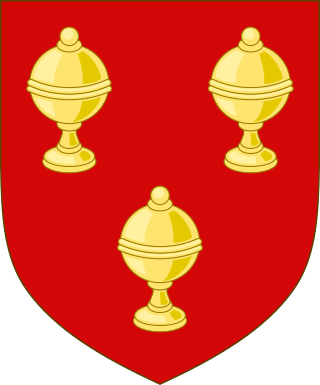
Pierce Butler, 4th Viscount Ikerrin, was an Irish peer, politician and professional soldier who rose to the rank of brigadier general under Queen Anne. He was outlawed as a Jacobite in 1690, when he was probably still in his early teens, but was restored to his titles and estates in 1698.







